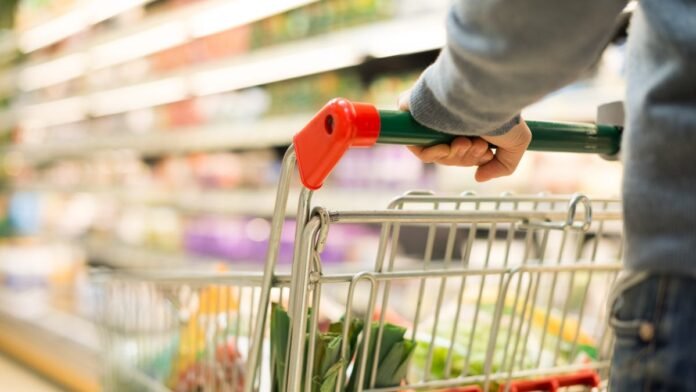
Powell says tariff-driven inflation a big question for Fed
Federal Reserve Chair Jerome Powell said the US central bank is still struggling to determine the impact of tariffs on consumer prices.
Bloomberg – Politics
- Consumers are feeling financially stressed, and potential food price hikes due to tariffs could worsen the situation.
- While food price increases have been moderate so far, experts predict a potential surge due to tariffs in the coming months.
- Merger and acquisition activity in the supermarket industry is expected to continue, potentially influenced by tariffs and supply chain disruptions.
A majority of consumers describe themselves as financially stressed, and looming price hikes on many supermarket products, stoked by tariff policies, won’t help.
Food-price increases have been relatively mild so far this year, but some experts warn that could change soon.
The national monthly inflation report that came out on July 15 reflects the first real signal of tariff inflation, “with almost all of the impact on consumer prices still to be seen in the months ahead,” predicted David Kelly, chief global strategist at J.P. Morgan Asset Management.
That’s one of the key midyear trends that bear watching. Other key ones involve competitive pressures among supermarkets and the pace of consumer spending.
Tariff turmoil awaits
President Donald Trump’s efforts to raise import taxes on a slew of imported products could increase prices in supermarkets. It hasn’t happened yet in a big way, but more food inflation could be coming. With the White House delaying many tariffs, importers have had time to prepare, helping to ease the impact.
“Retailers are working hard to stock up for the holiday season before the various tariffs that have been announced and paused actually take effect,” Jonathan Gold, a vice president at the National Retail Federation, told Progressive Grocer, a trade publication. “Retailers have brought in as much merchandise as possible ahead of the reciprocal tariffs taking effect.”
Over the 12 months through May, food prices nationally rose 2.9%, higher than the overall 2.4% increase in the Consumer Price Index. Certain items have risen more than that.
A 11.5% jump in the price of coffee, which is mainly grown in Latin America, Africa and Asia, is one example, along with increases for fruits, nuts, sugar and other sweeteners, plus various vegetables and fruits, much of it trucked up from Mexico. Other items like paper goods and aluminum foil could also be affected.
But the most notable food jump lately, a 41.5% surge over the past 12 months in egg prices, reflects a nontariff cause, avian flu.
Belt-tightening consumers
In a slowing economy, with rising inflation concerns, millions of Americans remain wary of grocery-store prices and those for other items.
Big Chalk Analytics estimates the percentage of Americans who have actively reduced spending had risen from 27.8% in the Spring of 2024 to 34.5% in the Spring of 2025.
These consumers are characterized by prioritizing needs over wants and seeking out more affordable options. The Chicago research firm describes these as “trade-off consumers,” and they aren’t just lower-income families.
Still, consumers have made some progress with their budgets, helped by wages that have been outpacing inflation, the company said.
Even so, most people aren’t feeling especially prosperous, with 32% describing their financial condition as “healthy,” with the rest falling into the vulnerable, overextended or stressed categories. Those findings, as of May from J.D. Power, were elicited from the majority of consumers who have bank accounts. People lacking bank accounts tend to be worse off.
Reach the writer at russ.wiles@arizonarepublic.com.
